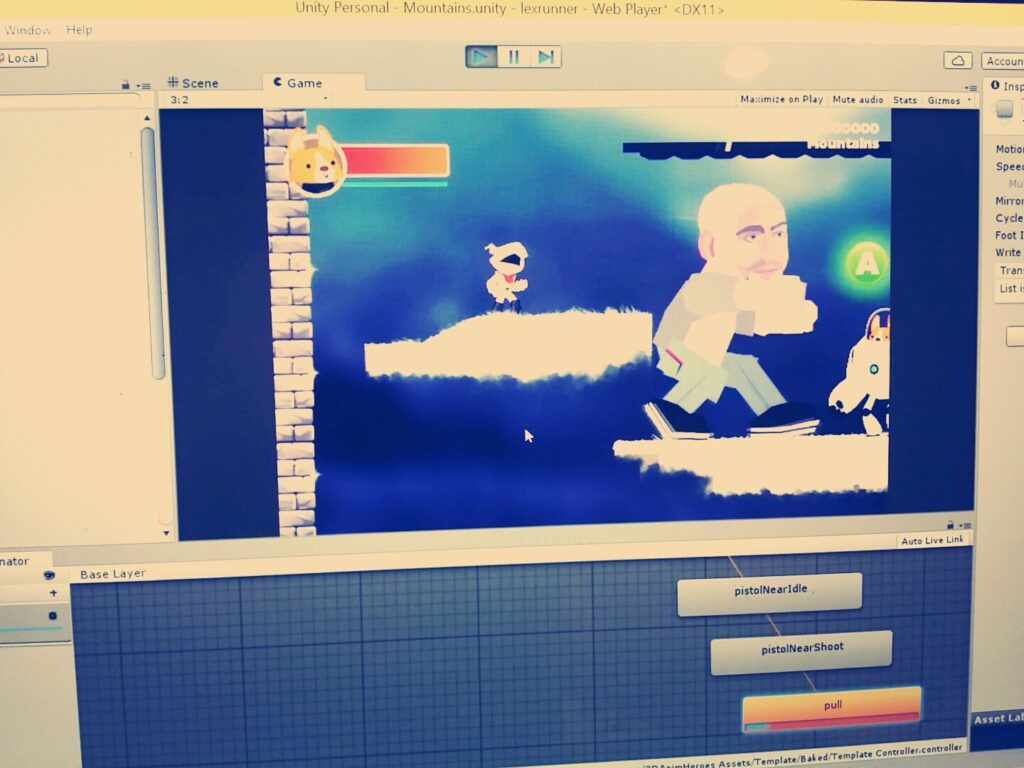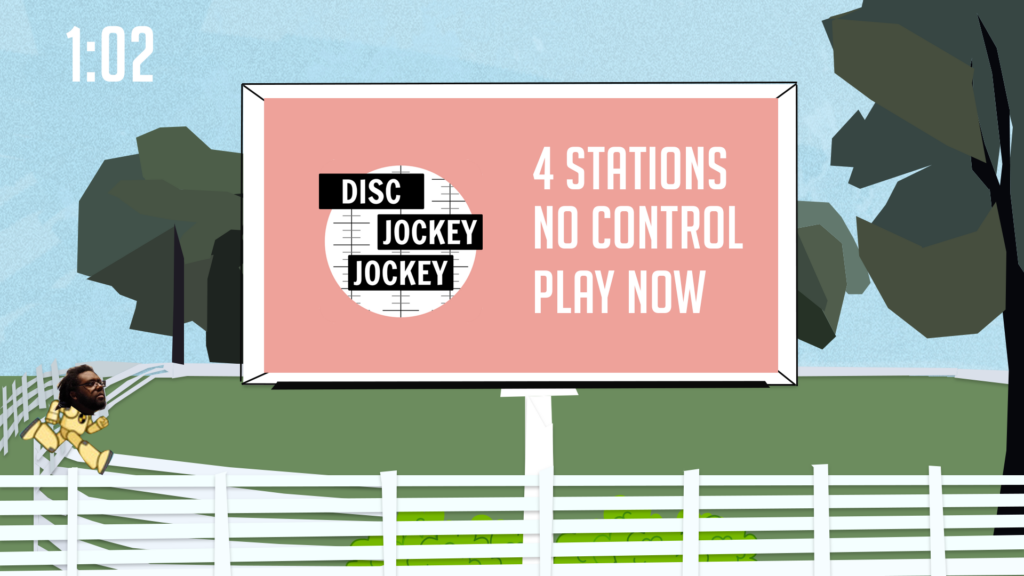-
Hurdle Complete: Super Soul
This blog post is posted as a part of the Hurdles series of work and tell game development. To find out more about Hurdles, please check out our handy FAQ. This blog post was provided by Super Soul for their Kickstarted infinite runner game.
We at Super Soul are currently working on a runner for the Lexitron as a part of the Lexitron Kickstarter. Our goal during this sprint was to make serious strides in the construction of this runner, since we just had a single piece of concept art. Over the duration of Hurdles, we made a great deal of progress on the runner: including concept art, character and level design, and the integration of the Corgi Engine and new Spine based animations.
To start off with, we finished two pieces of concept art that showcased what the character design would be, as well as two sections of the completed game. We had an initial concept of using a kind of a rough-scrapbook effect, but after looking through the concept art decided to go with a more cleaned up, construction paper look. This look is perhaps best illustrated in this piece of concept art:
This was the end of week 1. With this style in mind, we decided to work on continuing this through the characters that we created. We made two characters over the following two weeks, while simultaneously marrying the Corgi and new characters.
Our first character was based on Leonard, a friend of Super Soul. Our second character was Jeremy, one of the backers who will get turned into a character as his reward. We created both of them using Spine template animations found in the 2D Anim Heroes art pack and a low-poly-ish style that was meant to evoke the cut-out paper style that we touched on in the concept art. Here is an example of Jeremy as a character in the game:

Finally we started building out a level based on the first concept art of the horse farm. The game randomly generates sections of the level as the player runs.
As for process and lessons learned, the obvious seems to be that spacing out the work more over the week long process would be a better way to go. However, having a deadline every Tuesday made it easier to know that something actually HAD to be done. We made real strides on a game that we haven’t made serious progress on in a long while, and that was pretty great.









